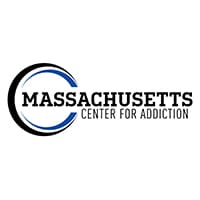Sep 14, 2023
Recognizing and Responding to Signs of Addiction in College Students
Quick Summary
- Early detection of addiction warning signs in college students is critical for prevention and intervention.
- Understanding addiction involves recognizing changes in behavior, academic performance, and relationships that may indicate a problem..
- Responding effectively to signs of addiction in college students can help prevent long-term negative consequences on well-being and academic success.
Addiction on college campuses is escalating, with students navigating various challenges that can pave the way for addictive behaviors. As early intervention is key to preventing severe repercussions on well-being and academics, this article offers insights into recognizing the signs of addiction in college students and providing effective responses.
College life, marked by its unique stresses and the transition to adulthood, can heighten susceptibility to addiction. Thus, understanding behavioral shifts, such as declining academic performance or increased substance reliance, becomes vital in safeguarding students from the adverse impacts of addiction.
Understanding Addiction
Addiction is a complex and chronic disease that affects the brain and behavior, making it difficult for individuals to control their use of legal or illegal drugs, even when they are aware of the harm they can cause.
Like other chronic diseases like diabetes or heart disease, addiction can be managed through appropriate treatment and lifestyle changes. It is essential for college students and those who work with them to recognize the signs of addiction and understand the importance of early intervention.
Addiction can be characterized as a substance use disorder, which is a condition that can lead to significant impairment or distress due to the uncontrollable use of substances. Substance use disorder is not a personal choice or moral failing. It is essential to approach it without judgment, supporting affected individuals instead.
Role of Pleasure and Excitement in Driving Substance Use
One factor contributing to addiction development is the role of pleasure and excitement. Substances often trigger the release of neurotransmitters like dopamine, which creates a pleasurable sensation and increases the likelihood of future substance use.
This process can eventually lead to addiction, as individuals continue to seek out the pleasurable feelings associated with the substance even when faced with negative consequences.
For college students, the excitement of new experiences and environments can also serve as a catalyst for substance use, making them more vulnerable to developing addiction. College students may experiment with substances to cope with stress, socialize, or escape personal challenges. Sometimes, what starts as casual or experimental use can evolve into an addiction.
Recognizing the signs of addiction and understanding the role of pleasure and excitement in driving substance use can help college students and those who work with them respond effectively to those who may be struggling with substance use disorder.
Early intervention and support are crucial for individuals struggling with addiction, potentially preventing long-lasting consequences and promoting recovery.
Recognizing the Warning Signs
Recognizing the warning signs of addiction in college students is crucial in order to intervene and provide support at an early stage. This section will cover physical and behavioral signs indicating a student is struggling with addiction.
Physical Signs
Physical signs of addiction can manifest in the student’s overall appearance. You may notice a decline in personal hygiene, grooming, and general upkeep. This can include unkempt hair, dirty clothes, and a general disheveled appearance. Additionally, changes in weight, either gaining or losing, may be observed. Withdrawal symptoms vary depending on the substance used but can include tremors, sweating, and nausea.
Some physical signs that may indicate addiction include:
-
Decline in personal hygiene and grooming
-
Changes in weight
-
Withdrawal symptoms (tremors, sweating, nausea)
Behavioral and Psychological Signs
Behavioral and psychological signs can range from mood swings to changes in academic performance or social activities. Students might exhibit abnormal obsessions, such as spending excessive time online or engaging in risky behaviors. Sometimes, the student might isolate themselves from friends and family, becoming withdrawn or secretive.
Some common behavioral and psychological signs include:
-
Mood swings
-
Change in behavior
-
Abnormal obsession
-
Withdrawal from social activities or family
It’s important to remember that these signs can vary among individuals and that not every student exhibiting these behaviors struggles with addiction. However, recognizing these signs can help identify students who may need support and intervention.
Addiction and Its Impact on Academic Performance
Addiction doesn’t just affect a student’s physical and emotional well-being; it can also have profound consequences on their academic journey. As substance abuse or addictive behaviors take hold, a student’s focus, dedication, and academic performance can wane.
Effect on Grades and Study Habits
Addiction, whether it’s to substances or the internet, can greatly affect a college student’s academic performance. The most noticeable impact is on their grades. Addicted students often find it difficult to concentrate on their studies, leading to a decline in their grades and overall academic performance. Their study habits may also suffer as the addiction consumes more of their time and energy.
Moreover, addiction can also lead to a decline in class attendance. Students may choose to skip classes to engage in their addictive behavior, further worsening their academic performance. This absenteeism disadvantages them compared to their non-addicted peers, as they miss valuable lessons and class discussions.
In addition, students with addiction often procrastinate or put off completing assignments and studying for exams. This can result in missed deadlines and poor test performance, lowering their grades.
Disciplinary Consequences
Addiction can also lead to disciplinary consequences within the college or university. This may be in the form of academic probation, suspension, or even expulsion. These penalties are instituted by the school administration in response to the student’s poor academic performance and disruptive behavior, which can be fueled by their addiction.
In many cases, students facing disciplinary consequences may be referred to counseling services, which may help them recognize the signs of addiction and develop coping strategies. However, not all students take advantage of these resources, and their addiction may continue to worsen, further affecting their academic performance and social behavior.
Addiction is a serious issue that can severely impact a student’s academic performance. It can lead to poor grades, poor study habits, and disciplinary actions taken by the school. Addressing addiction early on is crucial for students to recover and succeed academically and personally.
Common Substances Abused on College Campuses
College campuses are often a melting pot of experiences, and unfortunately, this includes exposure to a range of addictive substances. While some substances are commonly known, others might be less obvious but equally detrimental. In this section, we’ll explore the most prevalent substances college students abuse and their potential associated risks.
Alcohol and Binge Drinking
Alcohol is one of the most common substances abused by college students. Many students engage in binge drinking, which is defined as consuming five or more alcoholic drinks within a two-hour period for men and four or more drinks for women. Binge drinking is particularly dangerous as it can lead to alcohol poisoning and long-term health issues such as alcoholism (alcohol use disorder).
The college environment often fosters a culture where alcohol is consumed during parties and social events, leading to higher rates of binge drinking. It is crucial for students and faculty members to recognize the signs of alcohol abuse, including frequent intoxication, neglect of responsibilities, and changes in behavior or physical appearance.
Drug Use Among College Students
In addition to alcohol, college students may also abuse various types of drugs. Some of the most commonly abused substances include prescription medications, opioids, marijuana, and stimulants. Many students turn to these drugs for various reasons, such as dealing with stress, boosting academic performance, or experimenting in social situations.
Prescription medications, such as painkillers, can be particularly problematic as students may not realize the potential dangers of their misuse. Opioid addiction is a significant concern, as it can lead to severe health consequences and even fatal overdoses. Understanding the causes and effects of opioid addiction is essential to prevent its spread among college students.
On the other hand, stimulant drugs like Adderall and Ritalin are often misused by students attempting to enhance their academic performance. This stimulant addiction can have severe consequences affecting both mental and physical health.
By recognizing and responding to the signs of addiction in college students, we can take the necessary steps to provide support and assistance, helping them make healthier choices regarding substance use.
Treatment Methods
Tackling addiction requires a multifaceted approach, blending both medical interventions and holistic support systems. Tailored treatment methods are imperative for college students in this unique life phase.
Professional Support and Therapy
Treatment for addiction in college students often starts with professional support and therapy. Licensed therapists and counselors, such as those at the Massachusetts Center for Addiction, can assist students in identifying the root causes of their addiction, navigating emotional and psychological challenges, and devising effective coping strategies.
Cognitive-behavioral therapy (CBT) is often used in treating addiction, as it focuses on identifying and modifying negative thought patterns and behaviors associated with substance use. In addition to individual therapy, family therapy may also be beneficial for college students, as it involves addressing family dynamics that may contribute to or exacerbate the addiction.
Group Therapy and Peer Support
Another treatment method for addiction in college students is group therapy and peer support. Group therapy sessions led by trained facilitators provide a safe and supportive environment for students to discuss their experiences with addiction, learn from others’ experiences, and develop coping skills. Some colleges and universities offer on-campus support groups tailored specifically to the needs of students struggling with addiction.
Peer support plays an essential role in recovery. It allows college students to connect with others who have faced similar challenges. These connections can provide encouragement, understanding, and practical advice for managing addiction while pursuing academic goals. Many colleges and universities have peer-led recovery organizations that offer community-building activities and resources to support sobriety and overall wellness.
By engaging in individual and group therapy/peer support, college students with addiction can work towards a healthier and more balanced life.
Relapse and Recovery
The journey towards overcoming addiction is rarely a straight path. It often includes setbacks, with relapses being a common occurrence. However, understanding relapse as a part of the recovery process rather than a failure can be instrumental in fostering resilience and continuous growth.
Understanding Relapse
Relapse is a common part of the recovery process for college students struggling with addiction. It occurs when an individual returns to their addictive behavior after a period of abstinence. Relapses can be triggered by various factors, such as stress, exposure to the substance or behavior, negative emotions, or situations that remind the individual of their addiction.
To help college students recognize and respond to the signs of relapse, it’s crucial to understand the stages:
-
Emotional relapse: During this stage, the individual may experience negative emotions, such as anger, anxiety, or depression, but they are not yet thinking about using the substance or engaging in the addictive behavior.
-
Mental relapse: In this stage, the person struggles with thoughts of returning to the addiction. They may experience cravings, fantasize about using the substance or engaging in the addictive behavior, or begin negotiating with themselves to justify using again.
-
Physical relapse: This stage involves returning to substance use or addictive behavior, marking a full relapse.
Journey to Recovery
The road to recovery from addiction is a challenging and ongoing process. For college students, the journey may include the following steps:
-
Acknowledgment: The individual recognizes the addiction and admits they have a problem.
-
Acceptance: They accept responsibility for their addiction and understand they need help.
-
Seeking support: College students should be encouraged to seek help from professionals, friends, family, or support groups.
-
Creating a plan: Building a recovery plan involves setting realistic and achievable goals, such as attending therapy sessions, engaging in healthy activities, and building a support network.
-
Implementing the plan: Consistently following the recovery plan, even when facing challenges, is essential for success.
-
Maintaining sobriety: Periodic check-ins and support from others and practicing mindfulness and stress reduction techniques can help prevent relapse.
Assisting college students in recognizing and responding to the signs of addiction, understanding relapse, and supporting their journey to recovery can foster a healthier and more successful academic experience. By offering resources and encouragement, it is possible to aid students in overcoming addiction and working towards long-term sobriety.
Role of Family and Friends
Behind many individuals battling addiction stands a network of family and friends, often bearing the weight of concern, confusion, and a desire to help. These support systems are invaluable, offering emotional backing and practical assistance.
Supporting an Addicted Individual
Family and friends play a crucial role in recognizing and responding to signs of addiction in college students. They are often the first line of defense when it comes to identifying problematic behaviors and providing emotional support. It is important for parents and friends to educate themselves about the signs of addiction, such as changes in behavior, declining academic performance, withdrawal from social activities, and increased secrecy.
When supporting an addicted individual, it is essential to approach them with empathy and understanding. Open communication is key. Family members and friends should express their concerns without judgment. They can encourage the individual to seek professional help, whether it be through counseling, therapy, support groups, or addiction treatment programs.
Some steps that can be taken to help an addicted individual include:
-
Regularly checking in on their well-being and offering emotional support
-
Encouraging them to set realistic goals for recovery
-
Accompanying them to medical appointments or support group meetings
-
Respecting their privacy and boundaries while also knowing when to intervene if needed
Dealing with the Hard Truth
Facing the reality of a loved one’s addiction can be painful and challenging for family and friends. Acknowledging the situation requires accepting the hard truth that addiction is a serious issue that may require long-term support and intervention. Parents and friends may experience feelings of guilt, sadness, anger, and helplessness, but it is crucial to remember that they are not to blame for the addiction.
It is essential for family and friends to practice self-care during this difficult time, ensuring that they also seek support for themselves, whether through therapy, support groups, or talking with others who have experienced similar situations. Setting healthy boundaries is vital, as it allows them to maintain their own well-being while still supporting the addicted individual.
Dealing with the hard truth of addiction involves:
-
Accepting the situation and working towards constructive solutions
-
Practicing self-care and seeking support for oneself
-
Establishing and maintaining healthy boundaries
-
Recognizing the importance of long-term support and intervention
In conclusion, family and friends are vital in the process of recognizing and responding to signs of addiction in college students. By offering support, understanding, and encouragement, they can play a significant role in helping their loved ones overcome addiction and work towards a healthy, fulfilling future.
Prevention and Education
Preventing addiction and supporting college students in their struggle with substance abuse hinges on education and awareness. Schools are pivotal in providing resources and creating an environment that fosters healthy student choices. Collaborative efforts among faculty, staff, and students can foster a community that is well-equipped to address the challenges of addiction and promote overall wellness.
Education about the dangers of substance abuse is the first line of defense against addictive behaviors. Instituting programs that teach college students the risks, warning signs, and potential consequences of substance abuse can empower students with the knowledge and skills to make informed decisions. Emphasizing the negative impact of harmful and underage college drinking on academic and social lives further highlights the importance of prevention.
Schools should also provide comprehensive training for faculty and staff, emphasizing their role in identifying and responding to distressed students. Effective communication and rapport-building techniques can encourage students to share their struggles, enabling faculty members to intervene early and connect students with appropriate resources.
Peer support programs can further bolster the prevention and education efforts within a college community. Engaging students in open discussions about substance abuse and mental health can break down barriers of stigma and encourage help-seeking. By fostering a sense of shared responsibility, students can become allies in addiction prevention, recognizing and responding to their peers who may be struggling.
While prevention and education are crucial in addressing addiction among college students, it’s vital to recognize that no single method guarantees success. Instead, a multifaceted approach is often the most effective. By basing strategies on collaborative efforts and tailoring them to the distinct needs of the student population, we can foster an environment where students feel supported in their journey. Ultimately, the goal is to guide them toward a healthy and fulfilling college experience.

Contact Us

Address
Quincy, MA 02169
Start your recovery with
Massachusetts Center for Addiction
Our team is available 24 hours a day, 7 days a week to answer any questions you may have. Give us a call today and begin your journey toward long-term recovery.








